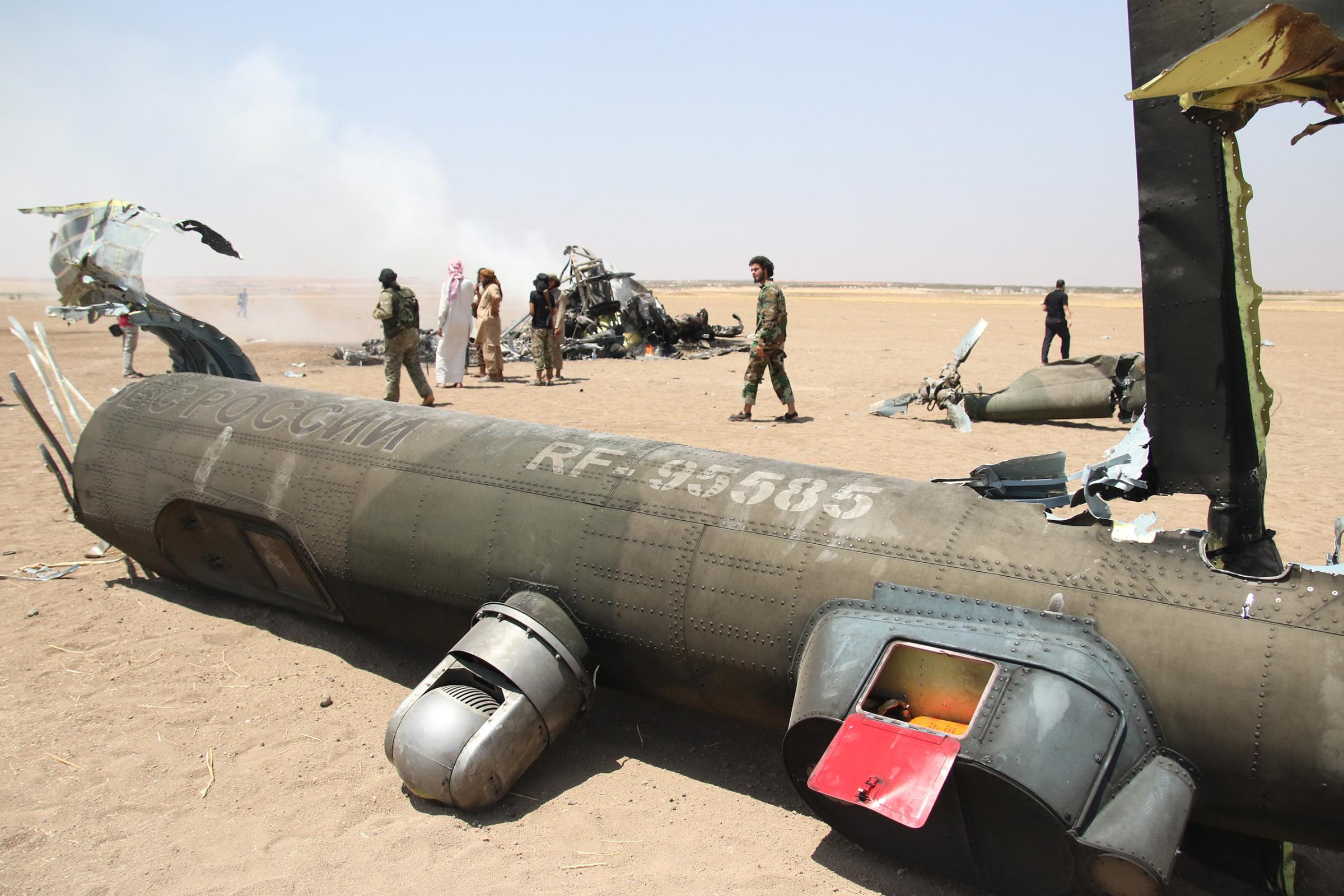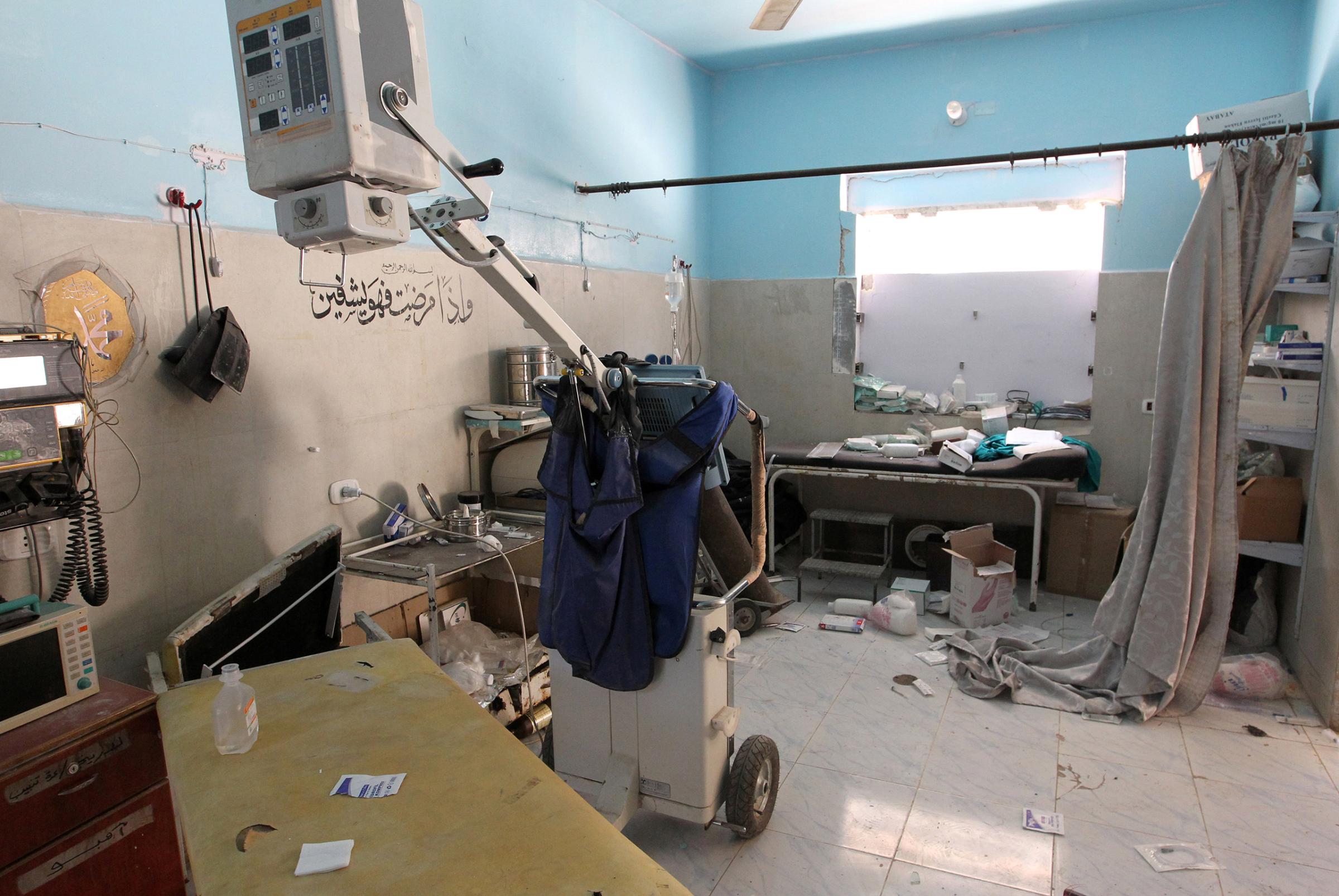
Black plumes of smoke have risen above the besieged Syrian city of Aleppo for the last 48 hours, as young people burned tires in the streets to produce a thick smog intended to obstruct the views of the Syrian government and Russian warplanes bombarding the city.
Scenes of teenagers and children rolling the tires into the street and setting them on fire represented a rare moment of hope in the opposition-held eastern section of Aleppo, where at least 300,000 people are encircled by pro-government forces. The improvised smokescreen coincided with an offensive launched on Sunday by mainly Islamist armed groups in an attempt to break the siege. The blockade began in June when government forces cut the last remaining route into the rebel-held section of the city, the Castello Road leading northwest out of the city.
“Yesterday all the people here worked together. FSA, FSP, hospitals, civilians, everyone,” says Mahmoud Rashwani, 30, an activist in rebel-held Aleppo on Monday, referring to the rebel umbrella group Free Syrian Army and Free Syrian Police. “It was great,” he adds in a text message.
This week’s insurgent counterattack comes at a transitional moment in the ongoing war, with rebel groups in the city fighting both to survive and remain relevant as a national force in the face of regime advances and the growing influence of extremist groups throughout the country. So far, the blockade remains unbroken in this crucible of the insurrection. In nearby Idlib province, fighters shot down a Russian Mi-8 military helicopter, killing five crew, the Russian government confirmed. Russia supports the regime of Syrian President Bashar al-Assad in his campaign to suppress the more than five-year-old armed rebellion against his rule.

The show of defiance represented by the burning tires was a cathartic moment in an otherwise bleak situation in Aleppo, Syria’s most populous city prior to the 2011 uprising that spawned the civil war. Vital supplies are scarce and cars have all but disappeared from the streets as a result of a lack of gasoline. The prices of staple foods like potatoes have more than tripled. Bakeries are concerned about dwindling supplies of wheat. According to the Syrian American Medical Society (SAMS), Aleppo currently only has 20 doctors serving some 300,000 people in the rebel-held section of the city, or a ratio of 15,000 to one.
The encirclement of the city also means there is no way for civilians to flee the fighting. At least 18 people were killed around Aleppo over the last 24 hours, including six children and a college student according to the Syrian Observatory for Human Rights, including some killed in rebel shelling of government-held neighborhoods. Last week, warplanes dropped leaflets urging people to leave the city, while the government and Russian forces claimed they had opened “humanitarian corridors” for people to exit. The leaflets came as the Assad regime reportedly made an offer of amnesty to rebel fighters willing to lay down their weapons over the next three months.
Activists and officials inside the city disputed the claims of a safe passageway out of Aleppo.“In reality, this was a huge lie,” said Munier Mustafa, the head of civil defense for the White Helmets rescue group in Aleppo. “There is no crossing that the regime has opened, and there is no safe place to leave from inside the city.”
In the last several days Russian and regime warplanes bombarding opposition held areas hit medical facilities throughout Syria, continuing a pattern of attacks on hospitals. In Aleppo alone, there were at least 15 attacks on medical facilities or personnel in July, according to SAMS. In southern Syria, an airstrike destroyed a hospital in the town of Jasim. According to Medecins Sans Frontiers, the facility was the only public hospital serving a town of about 65,000 people.

“It’s very clear it’s systematic,” says Dr. Mohamad Katoub, a spokesman for SAMS based across the border from Syria in Turkey. “We are trying to avoiding working in hospitals that don’t have good fortification.”
Another airstrike over the weekend hit the forensic medical lab in Aleppo, killing two staff, according to Mohammad Yasser Tabbaa of the Syrian Expatriate Medical Association. The unit had been responsible for investigating the aftermath of airstrikes and other fighting, meaning that some of Aleppo’s dead will now go uncounted.
The siege of Aleppo also appears to have given the more hardline groups opportunities to assert themselves within the insurgency. One of the groups reportedly participating in the counterattack is the newly renamed Jabhat Fateh al-Sham, or “the Front for the Conquest of the Levant,” previously known as Jabhat al-Nusra, the Syrian branch of al-Qaeda and a U.S.-designated terrorist group. The group announced that it split from al-Qaeda last week, but analysts and Syrian activists are skeptical that the break will substantively change the group’s jihadist program.
That creates a dilemma for Western governments sympathetic to the rebel cause, as well as aid organizations and mainstream Syrian opposition groups. On the ground in Aleppo, besieged residents of the city seemed less concerned with the group’s ideology than with their tactical role in the current battle. “People here are looking for anyone to break the siege,” said Rashwani, the activist in Aleppo.
“It’s very toxic, nobody wants to touch that,” says Adham Sahloul, an independent Syrian-American analyst based in Turkey, “They’re still going to be designated as a terrorist group and it’s still going to make things very complicated for anybody who’s doing Syria work.”
More Must-Reads from TIME
- Why Trump’s Message Worked on Latino Men
- What Trump’s Win Could Mean for Housing
- The 100 Must-Read Books of 2024
- Sleep Doctors Share the 1 Tip That’s Changed Their Lives
- Column: Let’s Bring Back Romance
- What It’s Like to Have Long COVID As a Kid
- FX’s Say Nothing Is the Must-Watch Political Thriller of 2024
- Merle Bombardieri Is Helping People Make the Baby Decision
Contact us at letters@time.com